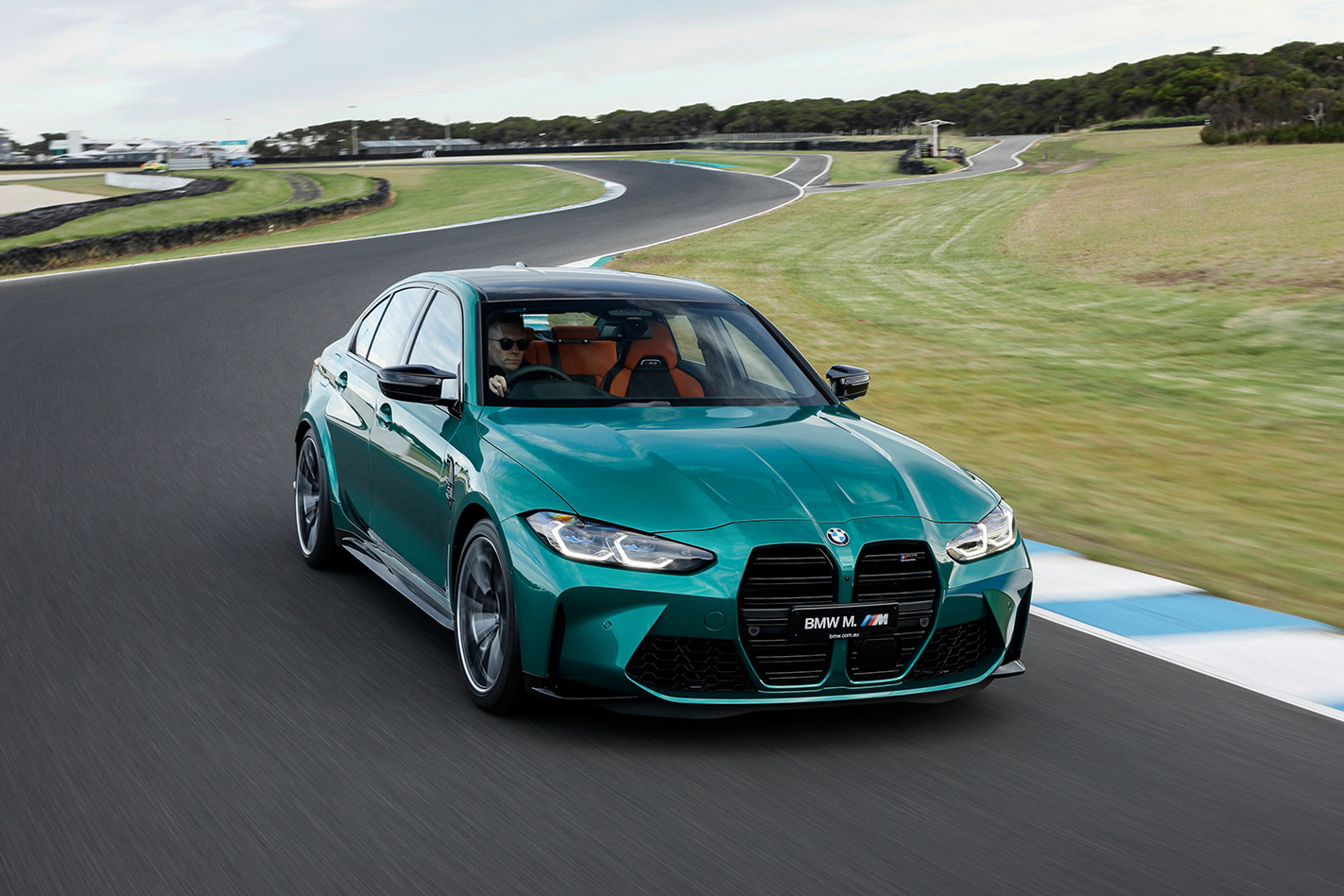Hindsight is never 20:20. More often than not, it’s an unreliable lens, surreptitiously depriving us of context. Take the BMW M3. The established narrative, moulded over time, is that the last generation M3 was a bit of a miss, that the original E30 version was the stripped-out motorsport hero and that AMG has finally got M’s number in this sector. Viewed in the round, none of these statements are true. We’re at the launch of the sixth-generation M3, the G80, hoping to see how it fits into Munich’s version of history.
It’s a hugely significant car. BMW M boss Markus Flasch has already outlined his masterplan for this vehicle. At the vanguard are the 353kW six-speed manual M3 and 375kW eight-speed auto M3 Competition sedans, the latter of which is idling in pit lane at Phillip Island. Waiting in the wings for launch later this year are all-wheel-drive versions and, for 2022, the mouthwatering prospect of the first-ever M3 Touring wagon.
It’s building on some solid foundations. The F80 was easily the biggest selling M3 to date, shifting more units in any year of its existence than the E30 M3 did in total over its five-year lifespan. It also nearly doubled the sales of its V8-powered E90/E92 predecessor, helping BMW M better AMG’s global sales figures for the last two years.
But while you seemed to love the F80, BMW’s first turbocharged M3, we were never quite so sold. Drive one really hard and they could feel spookily malevolent, a triple threat of spiky torque delivery, an oversquare stance and inconsistent steering response never quite being massaged into servility by the clever electronic control systems. If it was a cheese, it’d be labelled strong and bitey.
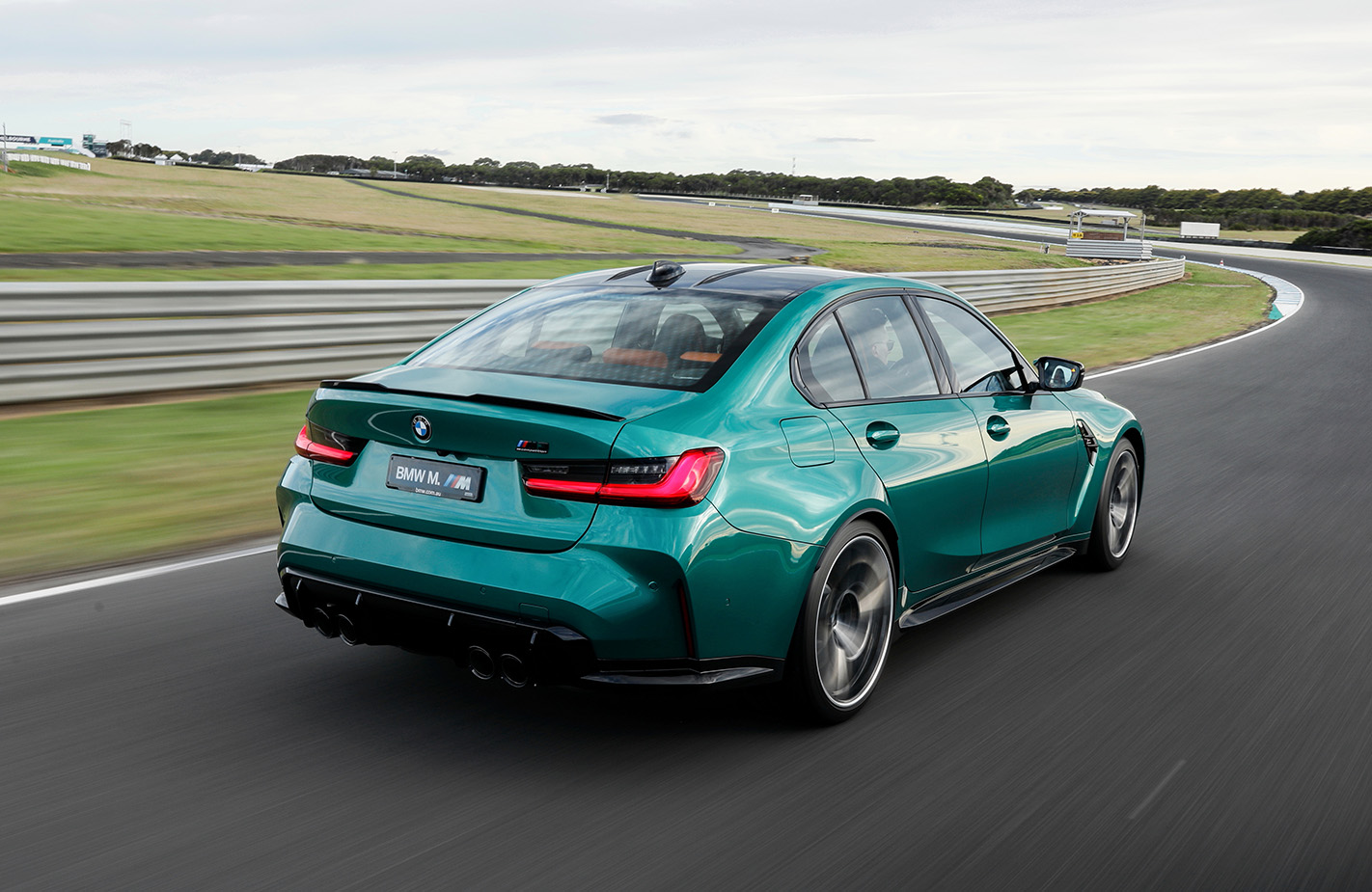
BMW has listened to this feedback and delivered a vehicle with a longer wheelbase, a bigger rear contact patch, a significantly stiffer front end, a more predictably plateaued torque curve and better steering. Job done? Not so quick. In doing so, the weight of this auto M3 Competition has crept up from its predecessor’s 1560kg (DIN) to 1730kg, a hefty 11 per cent climb. That’s huge.
There’s the same sense that the M3 has let its belt out a little when settling into the cabin. It’s airy and spacious. Motor the seat down and you have ruckman levels of headroom. Again, the numbers are telling. Its footprint on the road comfortably eclipses that of, say, a Bangle-era M5 V10. Thankfully BMW has amped up the sense of occasion inside. It’s still not AMG levels of jingle-jangle, but the touchpoints are higher quality, the cabin is slathered in carbonfibre trim fillets and the Merino leather seats, the standard head-up display, Harman Kardon stereo and laser headlights all speak of laudable attention to detail.
The Competition certainly seems like $5k very well spent over the $144,900 M3. For that you get an extra 22kW, as well as the eight-speed auto with launch control. This will help you to 100km/h in an attainable 3.9s, versus the 4.2 seconds of the manual M3, for which you’ll need to be both very skilled and lacking in a certain mechanical sympathy to replicate. The Competition also features that Merino upholstery, some beautiful carbon shift paddles with dimpled rubber obverses, and the ability to lock and unlock the car with a smartphone. There’s also Driving Assistant Professional semi-autonomous tech.
Given that a Mercedes-AMG C63 S retails at around $171k, it’s perhaps not surprising that a significant percentage of M3 Competition buyers are opting for a $26k option pack that features the stunning M carbon bucket seats, carbon diffuser, gurney flap, mirror housings and grille frame as well as carbon-ceramic brakes, which knock 25kg of unsprung weight out of the equation and will save you hours in wheel cleaning to boot. The optional seats offer a stack more support than the standard chairs, amp up the cabin drama appreciably and feature a removable pad in the headrest for when you’re wearing a crash helmet, delivering another 6mm of space behind your noggin. There’s also a carbonfibre ramp built into the seat base ahead of your unmentionables that looks very cool and is designed to support your thighs when cornering hard, but is a bit of an inconvenience if you’re a habitual left-foot braker.
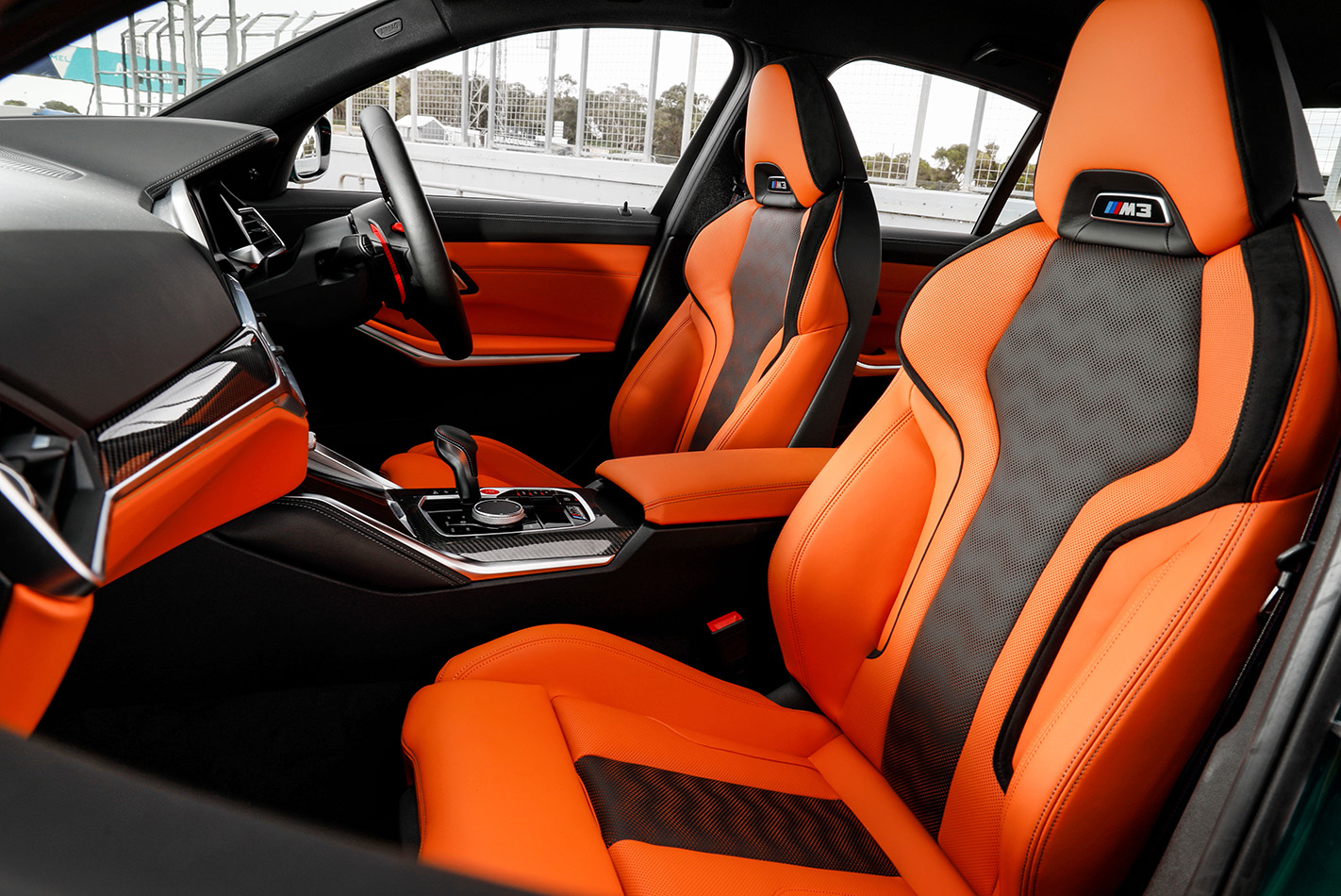
Pop the bonnet and the S58 3.0-litre twin-turbo lump has been incarcerated like Hannibal Lecter. Reinforcing struts run dome to dome, dome to bulkhead and dome to chassis struts. We’ve driven the S58 before, but in this iteration it differs from the unit in the X3M and X4M Competition models, with a revised crankcase, a different forged crankshaft and an uprated twin-chamber oil sump design. There’s an ingenious horizontal oil cooler that’s tucked just below the front radiator, utilising a flap at the leading edge to create negative pressure and suck cooling air up through it. Time to see if it all works.
BMW has set the car’s configurable M tabs up in advance, so we’re instructed to begin in M1 mode and then switch to M2. The M1 mode is a bit tame, with the engine and chassis in Sport, steering and brakes in Comfort, transmission in D2 – a dullish automatic mode – and DSC on. This lasts a couple of corners before clicking into M2, which amps the engine and chassis into Sport Plus, steering and brakes into Sport, the DSC into M Dynamic Mode and the ‘box to S3 sharp manual mode. Yes, you read that right: there’s a drive mode for the brakes, with Sport jacking up the initial servo bite of the six-piston fronts and single-pot floating caliper rear stoppers.
The initial impression is that the M3 Competition disguises all that weight very crisply. Even on tighter turns it stays flat, with a gradual lean onto its outside rear corner with a progressive and well-signalled transition into power oversteer. The dark side to the old F80 generation’s personality seems to have been replaced with something both more exciting in execution yet more benign in its limit handling. That’s a massive win.
Even better, when one of the sportier drive modes is selected, the cabin is drenched in sound from around 3500rpm. Yes, a certain percentage of it comes from speakers rather than the engine, but it’s a decent calibration, just adding a little cleanliness to the S58’s turbocharged voice. The four-exit exhaust is finished in black chrome on the Competition model and features a butterfly in order to game drive-by noise emissions tests and deliver a decent tone at higher engine speeds.
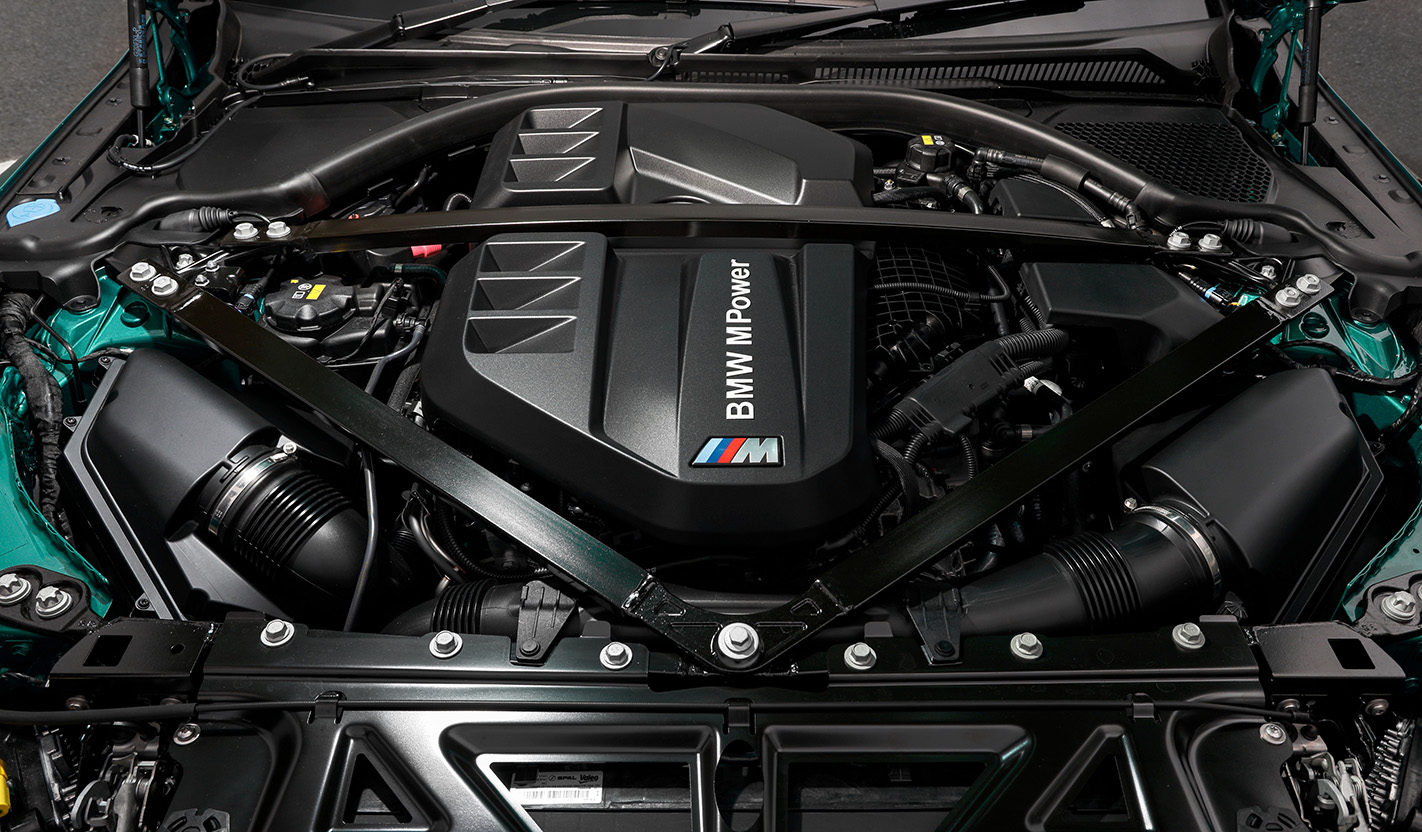
There are some caveats though. Given the pre-configured setup, the steering is relatively hefty without feeling heavy for its own sake, but there’s still a lack of detailed feedback from the front contact patch and the active rack takes a little keying into. Gauging how much purchase the front end has is a matter of gradually leaning harder into it. The answer is ‘a lot’. Even with that considerably stiffer front end, the M3 Competition is reluctant to understeer. Our car was shod with Michelin Pilot Sport 4S rubber, measuring 275/35 ZR19 up front and 285/30 ZR20 at the back, with other cars present wearing Pirelli P Zero or Bridgestone Potenza rubber. The Pirelli-shod cars would overheat their front boots after three or four laps of enthusiastic cornering. Our advice would be to insist on the excellent French hoops or shell out another $2k for the Pilot Sport Cup 2+ tyre option if you’re really serious.
The diff is a controlled limited-slip unit rather than the clutch-pack centre coupling that the all-wheel-drive version will get and isn’t overly aggressive in the way it spools. The turbochargers, one on each bank of three cylinders, are a different story. The M3 Competition’s peak torque figure of 650Nm is made between 2700 and 5510rpm, but the turbocharged twist action ramps up very sharply prior to this. Let the needle decay by just 200 revs to 2500rpm and you only have around 450Nm to play with. It’s the same with power: 120kW at 2500rpm, 190kW at 2750rpm. In other words, try to drive the M3 as you would, say a Merc C63, surfing around on a big, benign wave of torque, and it’ll feel old-school laggy. But why would you when it’s so good in the upper registers? At 5500rpm there’s a baton handover from peak torque to peak power, which the M3 retains to the 7200rpm redline. Anywhere above 3500rpm and the M3 Competition is a blast.

Given the limited time we had with the car, it wasn’t possible to fully assess all of the interactions between the differential, the stability control and the 10-stage traction control system. As a first taste, the M3 Competition certainly shows dynamic promise, weight notwithstanding, although opinions were divided over the steering. It doesn’t feel quite as hyper-alert as an Alfa Giulia Q but we’d question how many buyers would cross-shop these two cars. We’d even question how many conquest sales BMW can make from market leader AMG. We suspect that this corner of the market is tribal in terms of badge loyalty and that no matter what the BMW offers, some people will want the bluster of a V8 Mercedes and won’t change that affiliation no matter the dynamic talents of the G80 M3.
What will certainly test the limits of that loyalty will be when the Mercedes-AMG C63 gets its four-cylinder powerplant. That could be the moment where BMW looks set to cash in. Who knows, by then you may even have become accustomed to the grille. Predicting where this G80 M3 will be remembered in the canon of BMW’s greats is perhaps an even greater fool’s errand than mythologising the past. A session on a perfectly-surfaced race circuit tells us only so much. The acid test is already in the works.

SO, YOU THINK YOU CAN DRIFT?
Standard on both regular and Competition versions of the M3/M4 is the M Drive Professional package. This features M Track Mode, M Laptimer, the 10-stage M traction control and the hilarious M drift analyser which times your drifts, measures the distance drifted, assesses your maximum angle of dangle and then awards you a score between one and five stars. We can imagine there will be a few M3 owners who will have 1-star/tilt-tray scenarios in their futures.
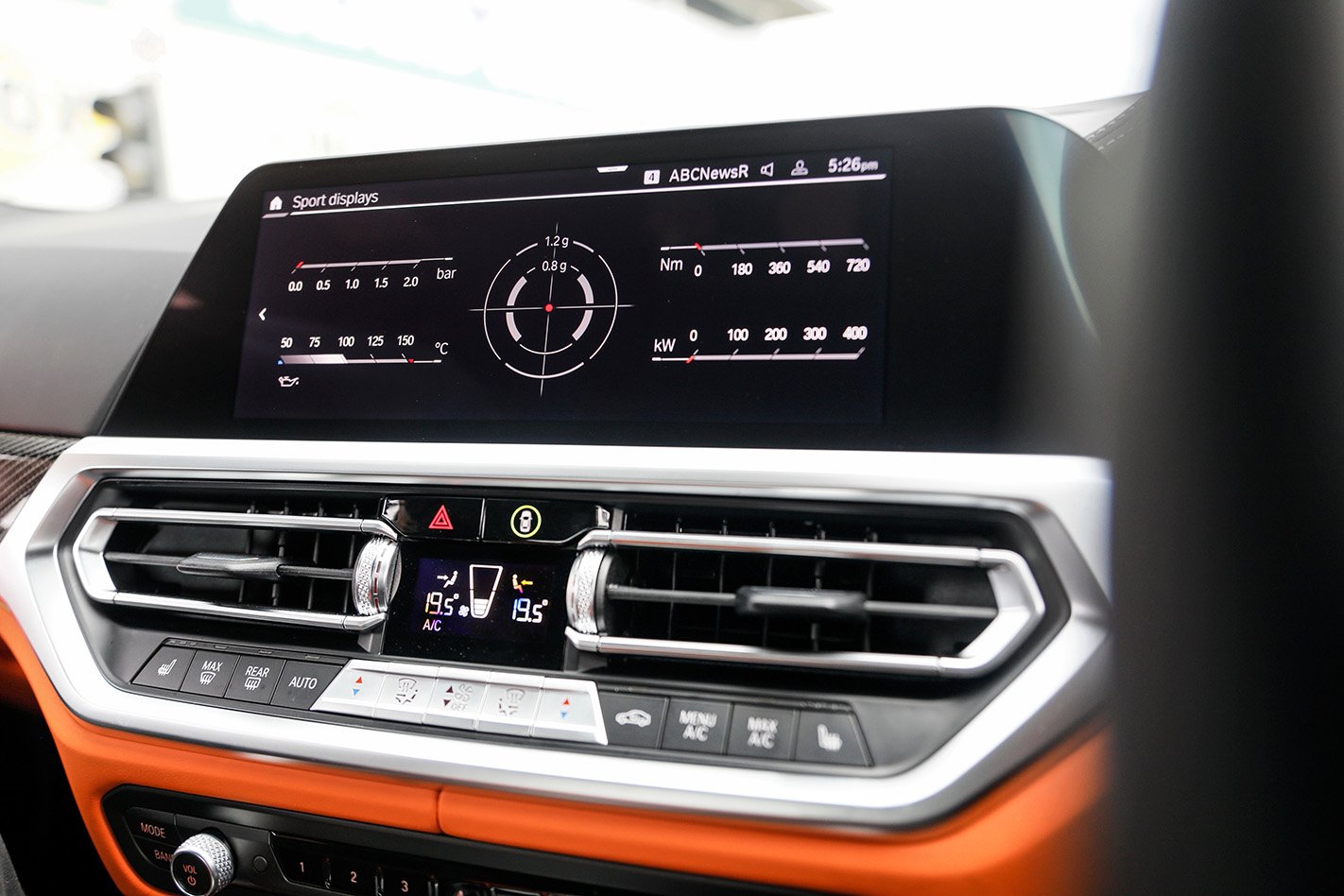
2021 BMW M3 COMPETITION SPECS
Engine: 2993cc 6cyl, dohc, twin-turbo
Power: 375kW@ 5510-7500rpm
Torque: 650Nm @ 2700-5510rpm
0-100km/h: 3.9s
Weight: 1730kg
Price: $149,900
Like: Ripping soundtrack; pace; body control; clever electronics
Dislike: Weight; size; manual model is power capped
Rating: 4.5/5



